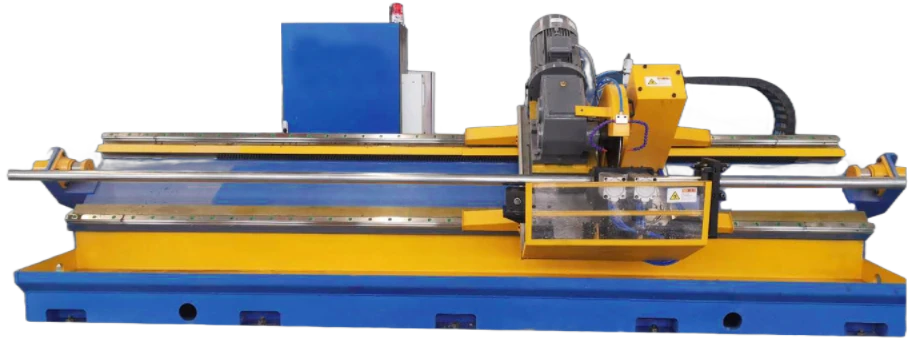Innovative Purlin Manufacturing Equipment for Efficient Structural Production
The Importance of Purlin Making Machines in Modern Construction
In contemporary construction, efficiency and precision are paramount. Builders and contractors are continually seeking ways to enhance productivity while maintaining high-quality standards. One essential tool that has emerged as a game-changer in the construction industry is the purlin making machine. This innovative machine has revolutionized the way metal structures are constructed, enabling faster assembly and greater durability.
What are Purlins?
Purlins are horizontal structural elements used in buildings, primarily to support the roof and walls. They are typically made from steel or aluminum and serve as a critical component in various types of construction, including warehouses, factories, and commercial buildings. Purlins provide stability by distributing loads evenly across the structural framework, making them integral to the overall integrity of a building.
The Functionality of Purlin Making Machines
Purlin making machines are specialized equipment designed to manufacture purlins efficiently. These machines can produce various types of purlins, including C, Z, and U shapes, which are commonly used in construction. The machines operate through a series of defined processes, including decoiling, roll forming, cutting, and punching, all while ensuring precision and consistency in the finished product.
The raw material—typically galvanized steel—is fed into the machine, where it is shaped and formed into purlins as it passes through a series of rollers. Advanced purlin making machines are equipped with computer controls that allow operators to customize specifications such as length, thickness, and shape, ensuring that the final product meets the exact needs of a project.
Advantages of Using Purlin Making Machines
1. Efficiency One of the primary benefits of purlin making machines is their efficiency. Traditional methods of manufacturing purlins can be time-consuming and labor-intensive. In contrast, automated machines significantly reduce production time, allowing contractors to complete projects ahead of schedule.
purlin making machine

2. Precision The accuracy of machine-made purlins is another significant advantage. Manual fabrication can lead to inconsistencies in measurements and structural integrity. Purlin making machines ensure that each purlin is manufactured to precise specifications, resulting in a higher quality building component.
3. Cost-effectiveness While the initial investment in a purlin making machine may seem substantial, the cost savings over time are considerable. With reduced labor costs, minimized material waste, and faster production times, these machines can lead to increased profitability for construction businesses.
4. Customizability Different construction projects may have varying requirements for purlins. Modern purlin making machines allow for custom production, so builders can easily adjust specifications to fit unique design needs without significant delays or additional costs.
5. Durability Purlins produced by advanced machines are often of higher quality, as the materials are subjected to rigorous quality control measures during the manufacturing process. This enhances the durability of the purlins, contributing to the overall strength and longevity of the structures they support.
Future Trends
As the construction industry continues to evolve, so too will purlin making machines. Innovations in technology, such as the integration of artificial intelligence and automation, promise to further enhance the capabilities of these machines. For instance, smart machines could optimize production schedules and reduce waste more effectively, reflecting an industry-wide shift toward sustainability.
Additionally, with the rise of modular construction, the demand for customized purlins will likely increase. Purlin making machines will need to adapt to these changes quickly, ensuring that they continue to meet the needs of a dynamic construction landscape.
Conclusion
In conclusion, purlin making machines are an essential asset for modern construction practices. By enhancing efficiency, precision, and cost-effectiveness, these machines not only streamline the production of critical building components but also contribute to the structural integrity of the finished projects. As technology continues to advance, the potential for further improvements in purlin making machinery will play a crucial role in shaping the future of the construction industry.
-
High Frequency Straight Seam Welded Pipe Production Line-BzZhou Xinghua Machinery Equipment Manufacturing Co., LTD.|Precision Welding, High EfficiencyNewsJul.30,2025
-
High Frequency Straight Seam Welded Pipe Production Line|BzZhou Xinghua|Precision Welding&EfficiencyNewsJul.30,2025
-
High Frequency Straight Seam Welded Pipe Production Line - BzZhou Xinghua|Precision Engineering&EfficiencyNewsJul.30,2025
-
High-Frequency Straight Seam Welded Pipe Production Line-BzZhou Xinghua Machinery Equipment Manufacturing Co., LTD.NewsJul.30,2025
-
High-Frequency Straight Seam Welded Pipe Production Line-BzZhou Xinghua Machinery Equipment Manufacturing Co., LTD.|Precision Manufacturing, High EfficiencyNewsJul.30,2025
-
High Frequency Straight Seam Welded Pipe Production Line-BzZhou Xinghua Machinery Equipment Manufacturing Co., LTD.|Precision Steel Pipe Manufacturing&Industrial EfficiencyNewsJul.29,2025


